
“Yourcellf” is a project based on common issues identified through research in existing fertility centers in the United States, such as complex schedules, too much information, and lack of empathy and response, etc. Through designing a care-oriented protocol and a well-structured patient portal with an easy-to-follow process management tool, Yourcellf aims at redesigning the ecosystem of fertility and reproduction services to enhance the patient experience.
Time: March – May 2023
My Roles: UX Research, UX Designer, Brand Concept, UI Evaluation, UI Designer, etc.
Design Tools: Figma, Illustrator, Photoshop, Google Sheets, Miro, etc.
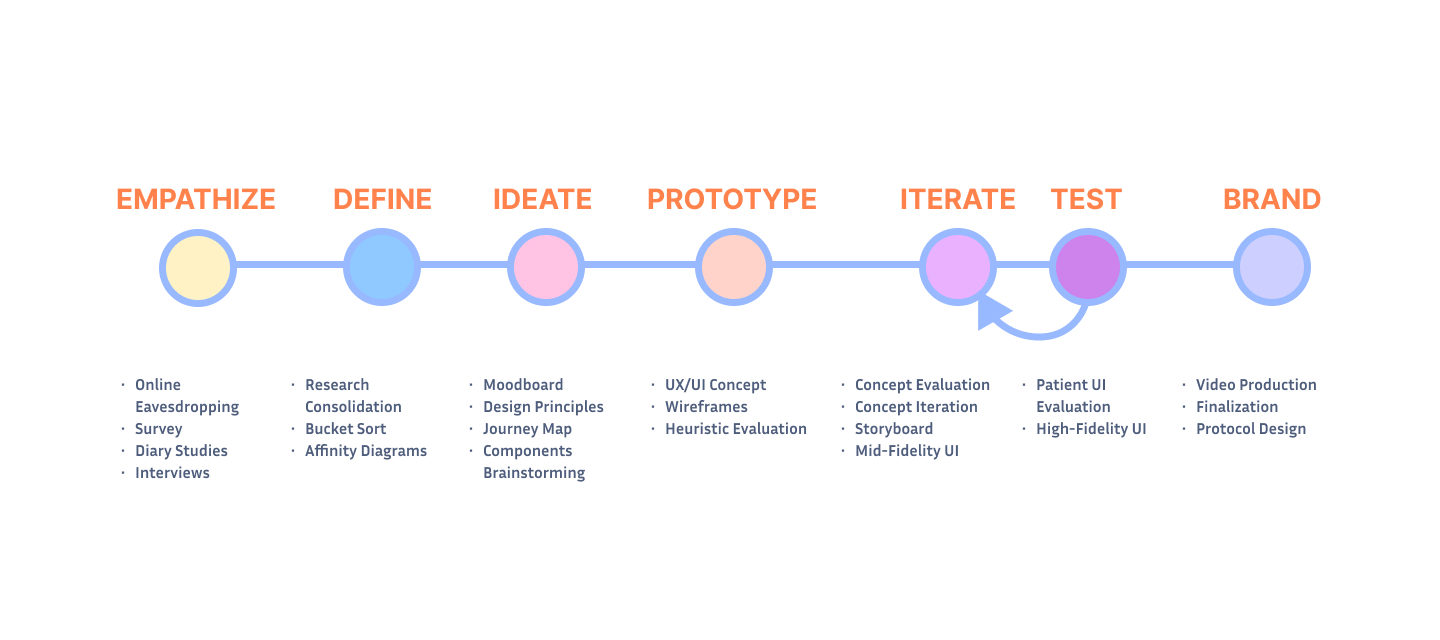
Introduction
My desire to redesign the ecosystem of fertility and reproduction services existed long before this project began. Approaching my mid-30s, I began preparing for egg-freezing during the fall semester of 2022. After a series of exhausting communications, scheduling, and lab work, I finally underwent the procedure over the winter break. As I shared my experience with female friends who had similar needs, aiming to help them avoid the same challenges, I couldn’t help but think that the system itself could do more to streamline the process. I view this design project as a personal manifesto advocating for change within this industry.
Empathize
Amidst my school and job responsibilities, preparing for egg-freezing consumed a significant part of my life in Fall 2022. Managing a busy daily schedule, coupled with the anxiety caused by uncertainty, I found myself frustrated when I received flowcharts from the care team just two weeks before the start of my cycle.

This frustration persisted even after my procedure. Conversations with individuals who had undergone IVF or egg-freezing services revealed that such frustration is widespread in fertility and reproduction services. Consequently, I established clear objectives before proceeding with further research.
RESEARCH OBJECTIVES
- Identify key factors to enhance patients’ sense of care and support throughout their journey in the fertility clinic.
- Evaluate communication touchpoints within the fertility clinic that could potentially have a negative impact on the patient experience across all stages.
- Identify and simplify the most intricate and confusing aspects of the fertility clinic’s visual and written communication.
My most accessible source was a mutual support WhatsApp group I joined in 2022. I conducted online observations by reviewing one week’s chat history. My second source was comprised of how-to diaries I read before and during my preparation, along with my own reflections on Medium. I diligently read between the lines, categorizing their words into themes such as Desires, Values, Problems, Technology, Hacks, and more. Additionally, I distributed a survey within the WhatsApp group and reached out to volunteers for further interviews.

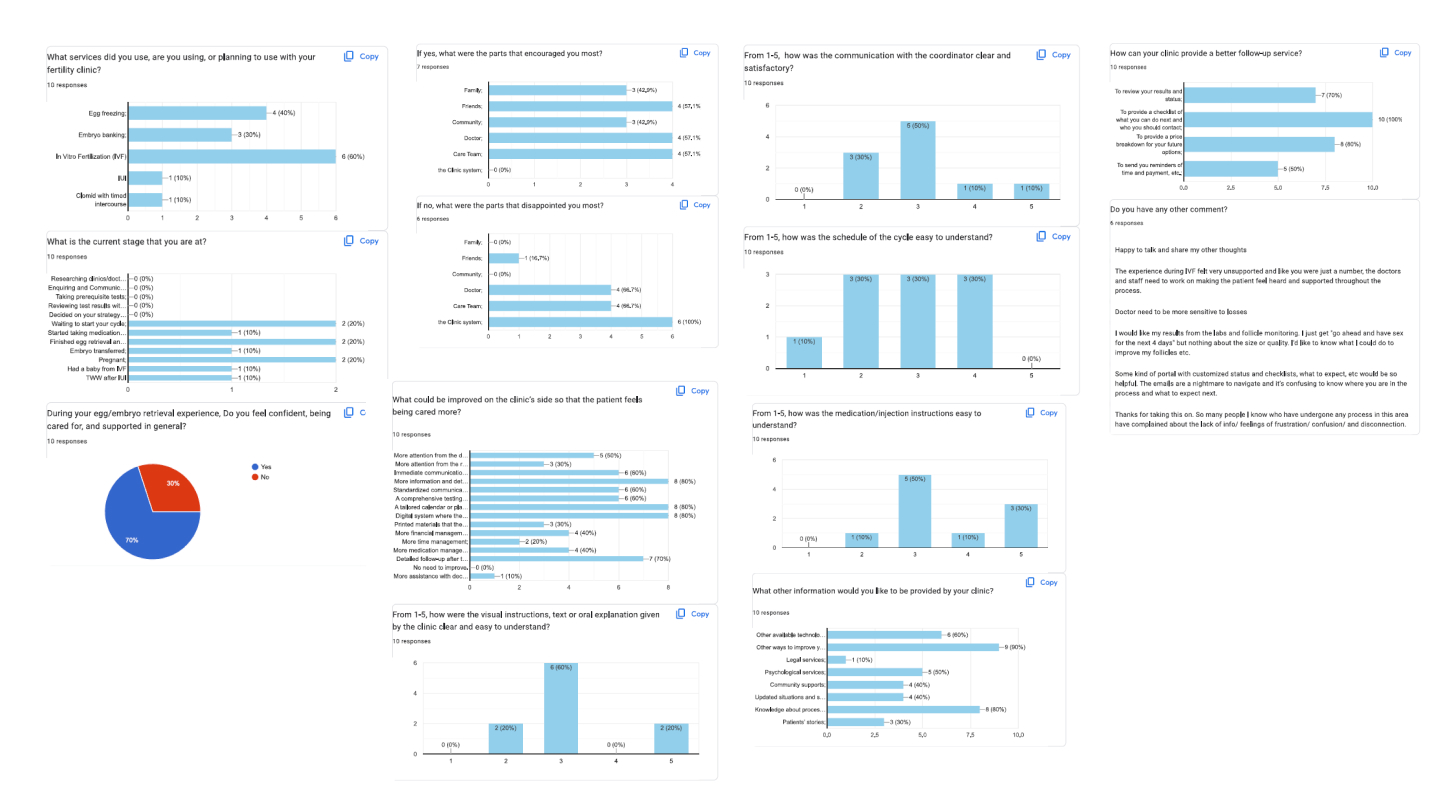
Define
I conducted interviews with four women who had undergone or were undergoing fertility and reproduction services. To consolidate all the research information and findings, particularly regarding “what they need” during these services, I employed bucket sorting and created an affinity diagram.


After creating the first affinity diagram, I identified four major patient community HOPES, which are: Communication, Empathy, Fertility, and Autonomy. By tracing the challenges and needs, I established my redesign goals.
REDESIGN GOALS
- Enhance the patient experience in fertility and reproduction services by redesigning the ecosystem, including the development of a patient portal prototype, refining care team communication protocols, and updating the clinic’s visual identity.
- Improve patient understanding of the process and create clearer expectations by designing a responsive progress bar.
Subsequently, I conducted additional rounds of affinity diagrams. I mapped “what they need” for each stage throughout the service cycle and used the four HOPES as another axis to determine “what can be provided” to address each need.

The upper section of the new affinity diagram was utilized to draft a journey map, outlining a patient’s emotional transition throughout the course of their services.
The lower part provides an infrastructure to design the care team’s protocol. This draft protocol employs color-coding to emphasize each step that the doctor (green post-it notes) and the rest of the team (blue post-it notes) need to follow when interacting with the patient.

Afterward, I thoroughly reviewed this draft protocol and identified areas where a patient portal system could offer an interface to streamline follow-up procedures. I then reorganized these findings using yellow post-it notes, categorizing them accordingly. Subsequently, I modified and assembled these categorized notes into a sitemap for the patient portal.
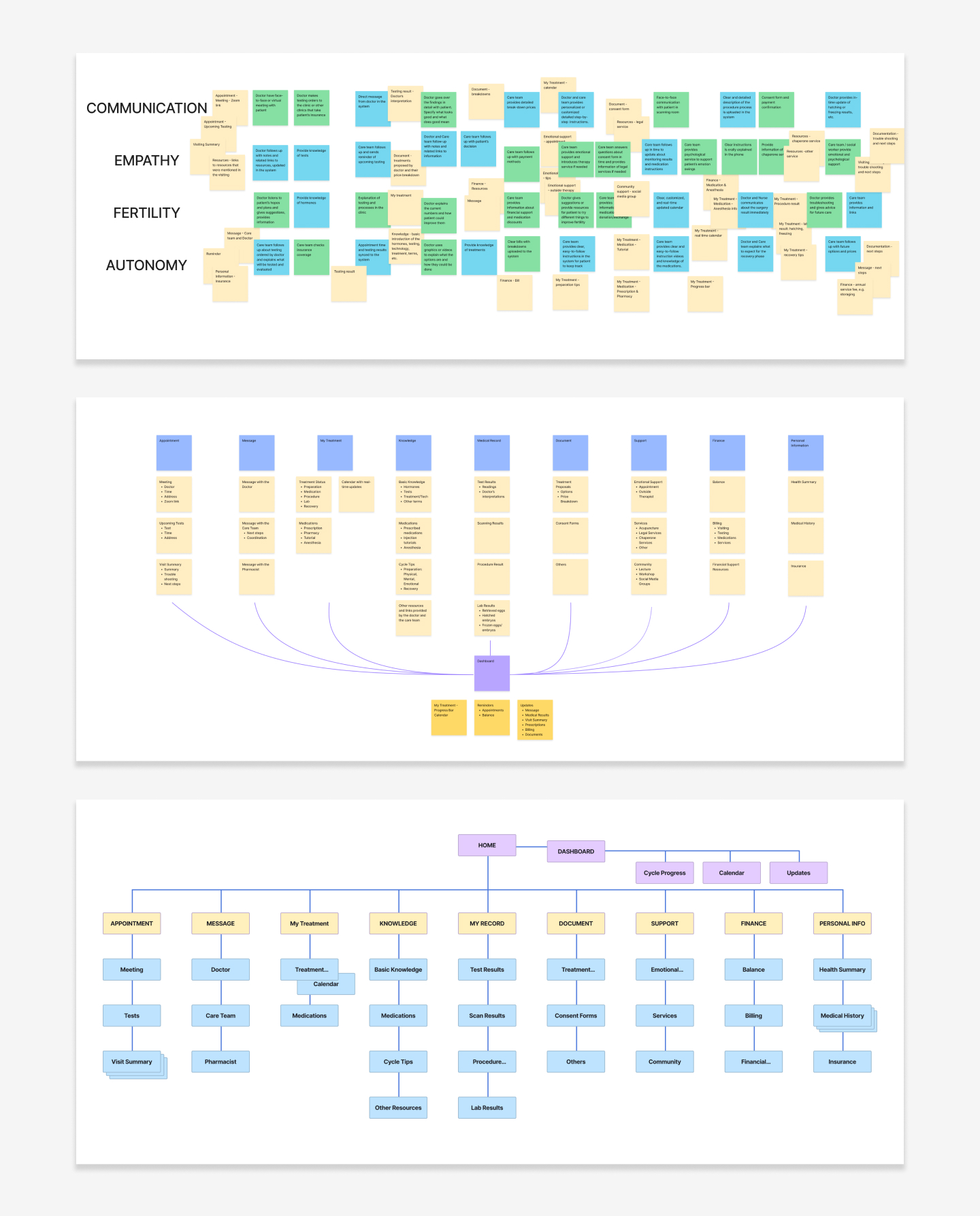
Ideate
Based on the findings and studies, I redefine the design principles and their corresponding design components.
DESIGN PRINCIPLES
- All the new designs are aligned with and support the FOUR HOPES.
- The content provided is tailored to each individual patient in a responsive manner.
- Communication between the patient and the care team consistently closes the loop by guiding the patient to the next step.
- The designs serve as a guide for the care team to deliver consistent and standardized services.
- Instructions for tasks such as medication administration, testing, billing, document signing, and other responsibilities are designed to be easy to follow and minimize the patient’s cognitive load.
DESIGN COMPONENTS AND SCENARIOS
- Segment services and resources at each step throughout the patient’s journey.
- Care team’s communication protocol.
- Progress bar in the patient portal’s dashboard.
- Customized calendar in both digital and physical versions.
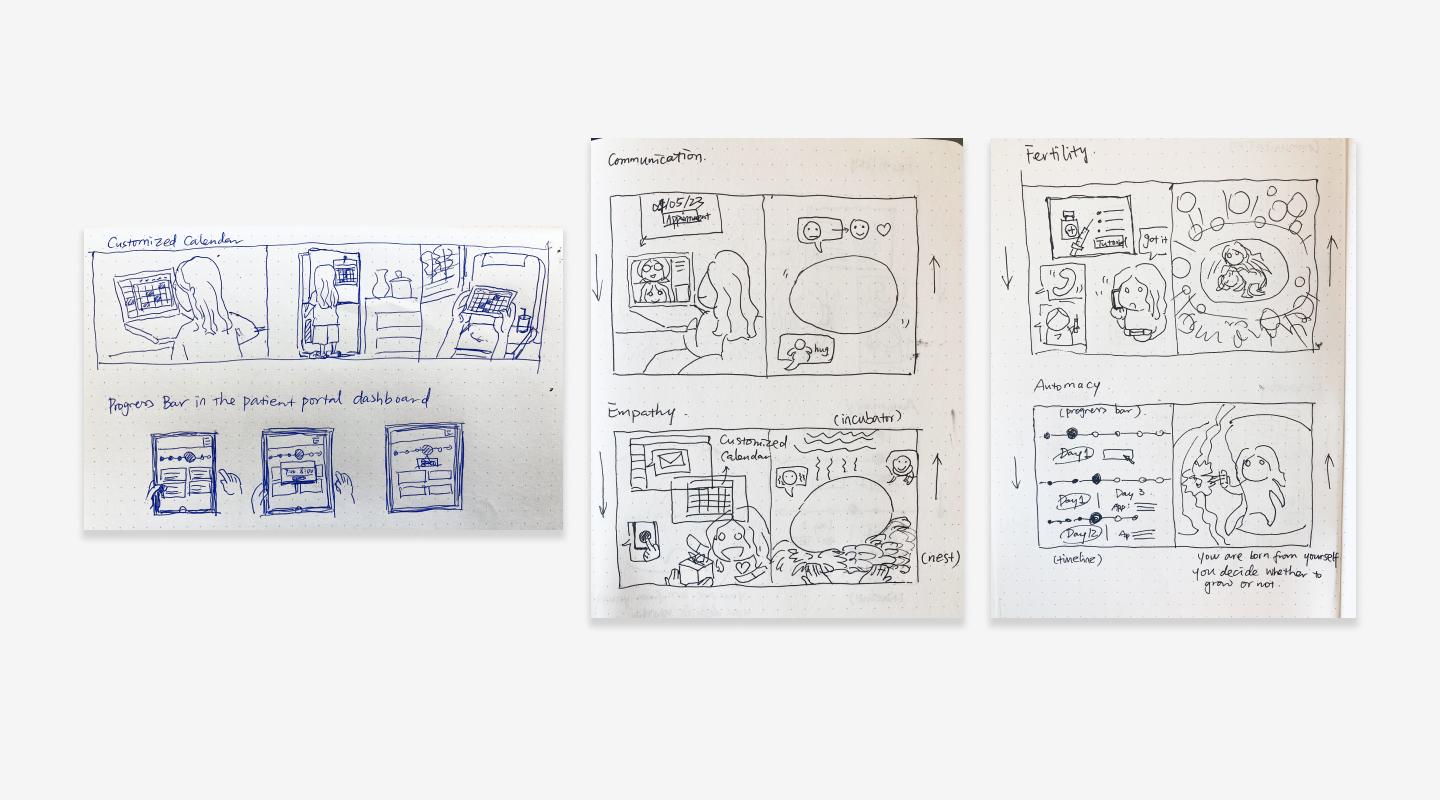
At the same time, I initiated the process of developing the brand concept and UI concept by conducting research on related visuals and creating a moodboard.
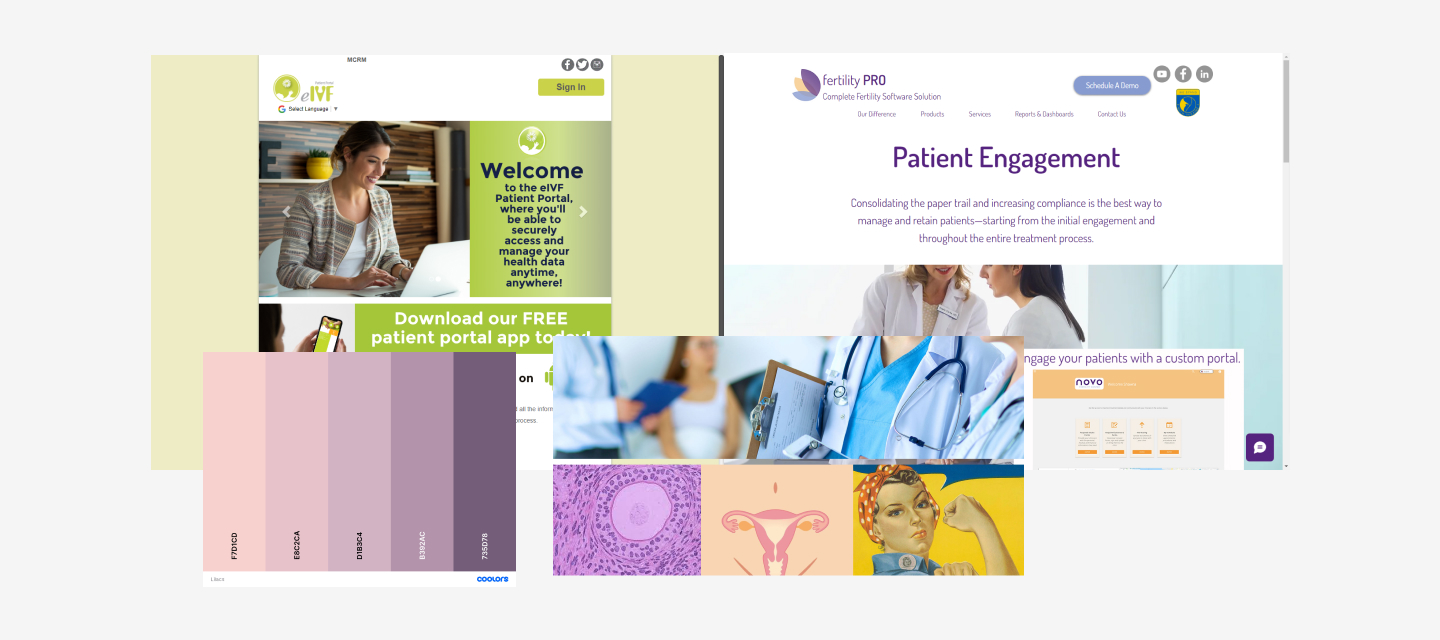
Prototype & Iterate
Initially, I used existing examples and the site map as a foundation to create the first version of wireframes for my experiment. Subsequently, I refined these wireframes and converted them into a digital format. Concurrently, I experimented with various color combinations to ensure alignment with both industrial aesthetics and the characteristics of the four HOPES.
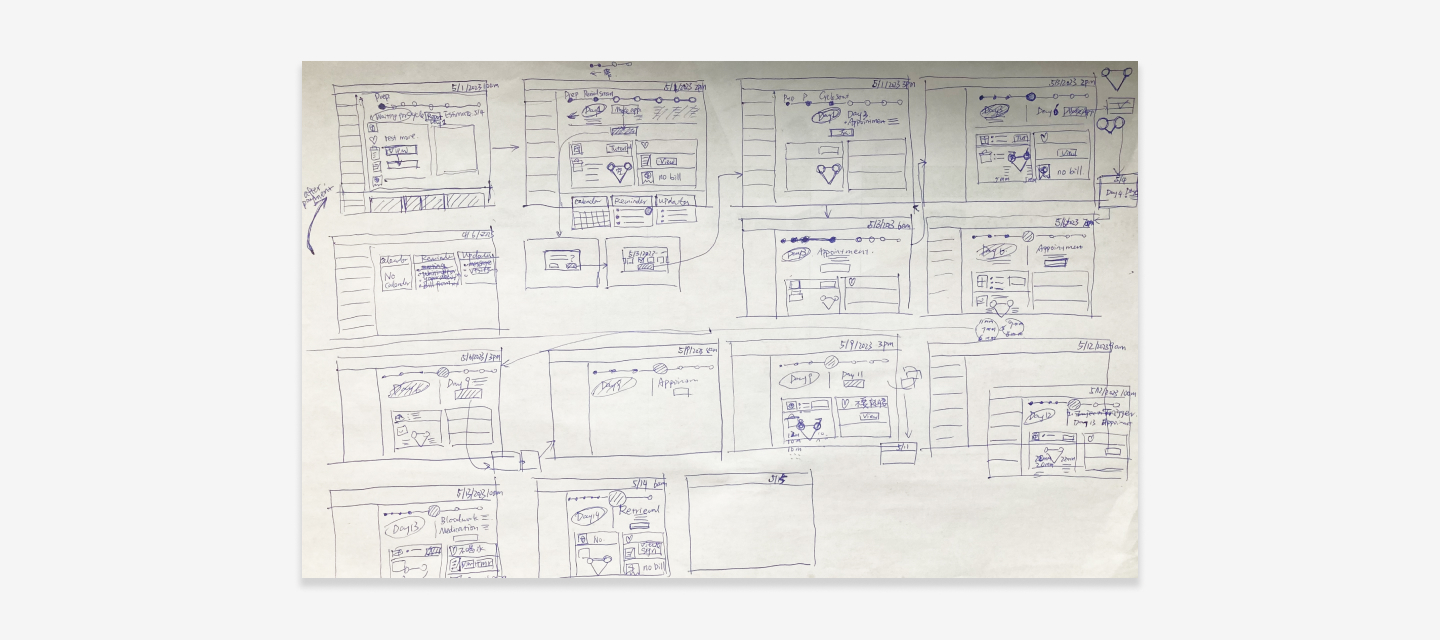
Next, I invited three professional designers who had no prior experience with fertility and reproduction services to conduct a heuristic evaluation. My goal was to assess whether the design could effectively guide a user unfamiliar with the topic through the entire process. Based on their feedback on user flows, UI features, colors, brand concept, and more, I promptly made updates to my prototypes. I dedicated significant time to exploring the usage of colors, as color coding plays a crucial role in the progress management section.

With the alpha version prototype, I conducted another round of evaluations with the four fertility patients, following a comprehensive UI Evaluation Protocol. I guided them through the user flows and gathered their opinions on various aspects, including the effectiveness of the progress bar, section layout, micro-interactions, color scheme, and more. All interviewees offered valuable suggestions and expressed their gratitude for being seen as an individual help-seeker through this project.
Concurrently, I completed the finalization of the system’s visual identity and UI design.

Brand
After the evaluations and iterations, I elevated the brand concept: The new ecosystem “Yourcellf” is a looking glass, or a hand mirror, where the reflection and self-projection provide reflecting communication and empathy. Through the looking glass, the user can clearly observe the change of their body so as to improve their fertility. Also, the handle allows the user to hold their full autonomy.


Afterward, I crafted a script and storyboard to narrate the story of how Alice utilized Yourcellf as her patient system during her egg-freezing cycle. Subsequently, I transformed this narrative into an animated presentation.

Then I continued to design the presentation of the care team’s communication protocol and the physical calendar.
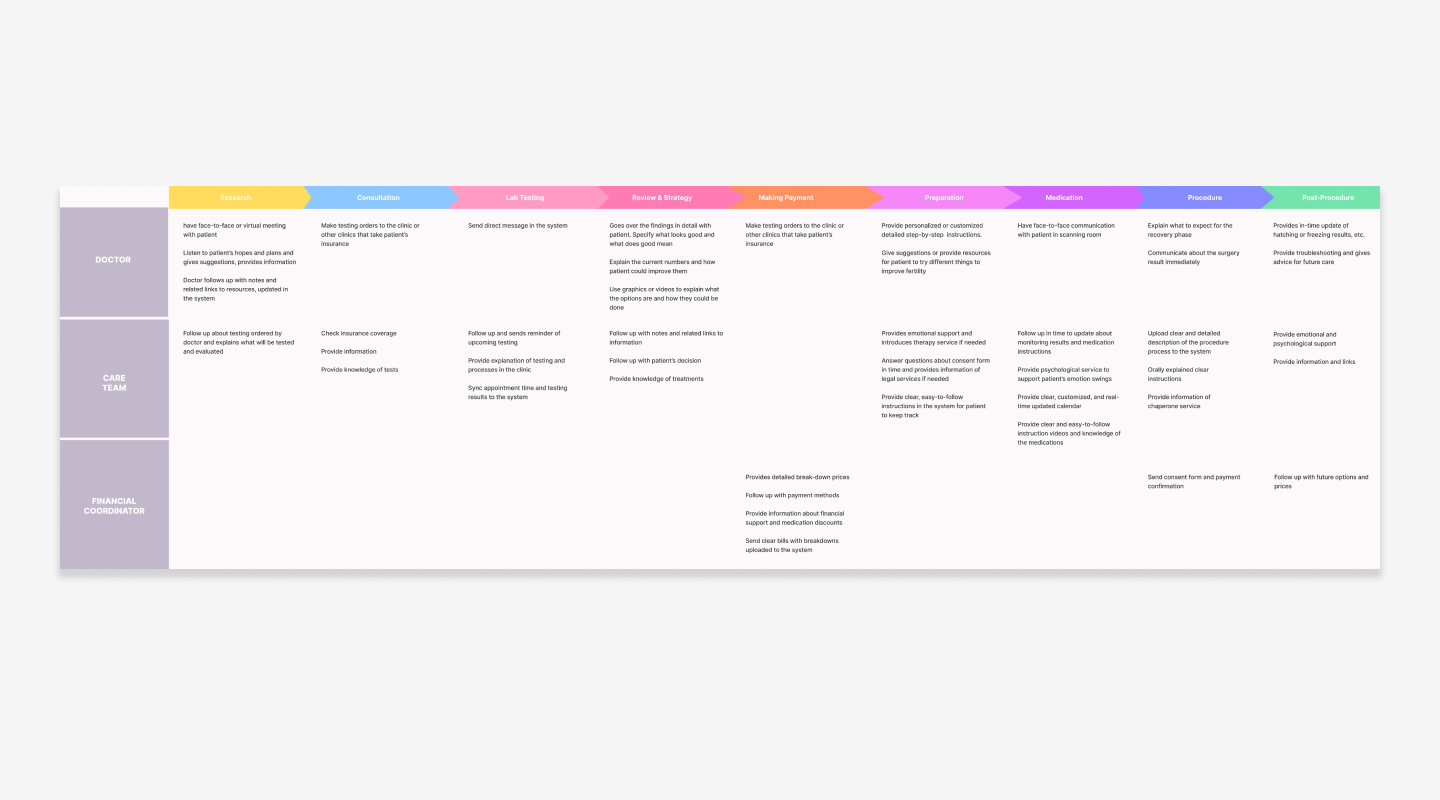

Reflection
I gained valuable insights from this project. Interviews provided me with a wealth of information. UI evaluations conducted by professional interaction designers taught me how to effectively use design principles such as proximity, colors, and graphics to imply relationships between elements. Additionally, I discovered the benefit of leveraging standardized UI designs that have already been tested in the market, which can save designers a significant amount of time during the testing phase.
Throughout this project, I heard many touching personal stories, not only during the initial user research interviews but also from the follow-up patient UI evaluations, particularly from underrepresented groups. Fertility and reproduction are specific and sensitive topics, and it’s easy to overlook certain details until you’ve experienced them firsthand.
I’ve also learned the importance of not shaping the design solely based on one person’s experience, especially when you, as the designer, are also a user. People have diverse preferences and behaviors. For instance, my initial idea was to create a clear flowchart because that’s how I typically think when solving problems. However, interviewees suggested offering both a timeline-based option and a calendar option for both visual-thinkers and spatial learners, recognizing that different users have different mindsets.
